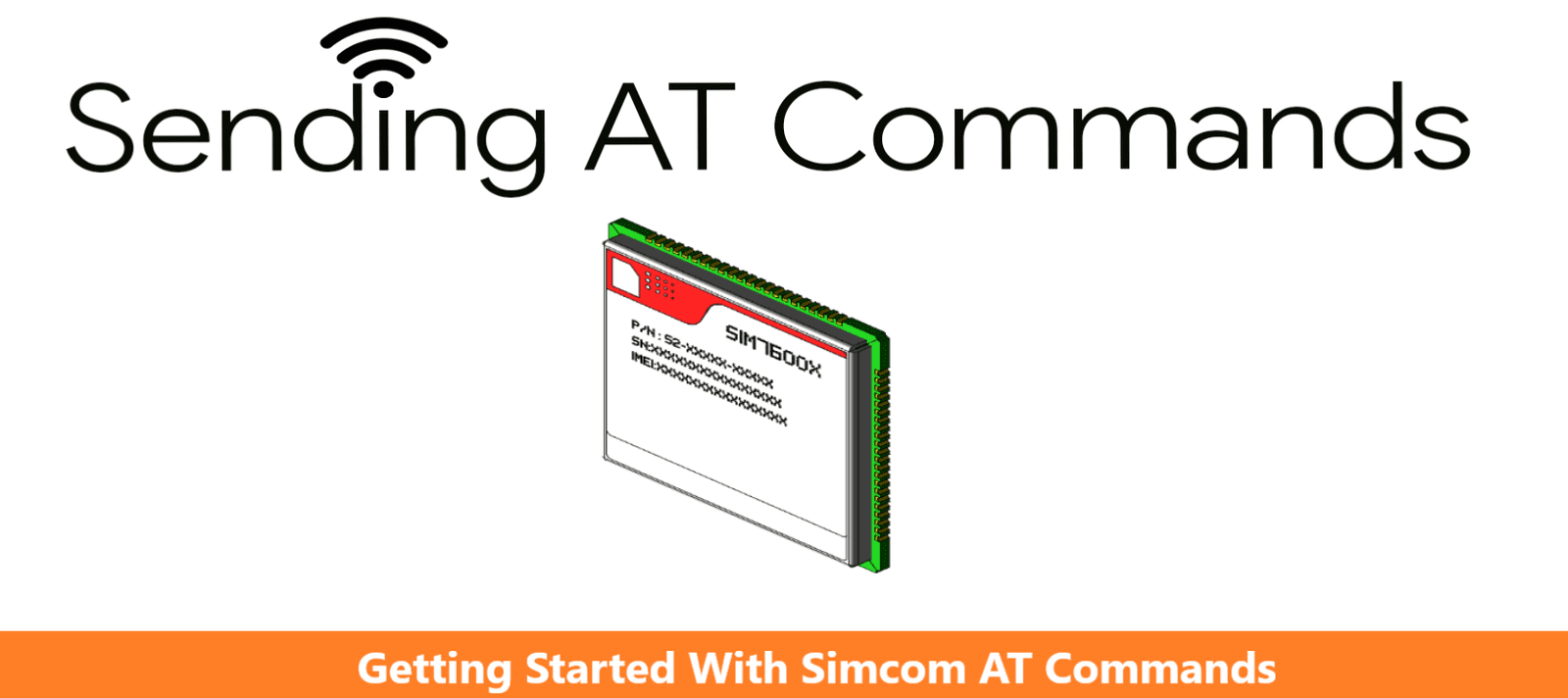
In the ever evolving increase in applications of IoT and Telecommunications, SIMCOM modules have emerged as reliable and go to solution for any embedded developer or a person working on cellular modems. Any developer who is working with a cellular modem will have to make use of what are called as “AT” commands. “AT” commands are essentially modem instructions which stand for “Attention”.
Understanding the use of AT commands helps to unlock the full potential of these modules. In this blog we will learn the basics providing a step by step walkthrough to help you get started with SIMCOM AT commands with correspondence with the SIMCOM SIM7600X module.
Setting Up Your Environment:
Before diving into the world of AT commands, ensure you have the following:
Simcom Sim7600X Module: Connect the Sim7600X module to your development environment.
Communication Interface: Establish a communication interface with the module, via a serial port. This can be achieved through USB-to-Serial converters or direct connections.
Terminal Software/Serial Monitor: Install a terminal emulation software such as PuTTY or Tera Term to send AT commands to the Sim7600 module.
Verify Connection: Type "AT" in the terminal and press Enter. If the module responds with "OK," your connection is successful.
How to Send AT Commands
AT commands are sent to the modem as plain text over a serial (UART) connection comprising two wires, one for receive (RX) and one for transmit (TX), or via USB. In the field, a cellular-enabled IoT device will manage its modem by sending it AT commands,
Now Let’s Start by Sending the AT Commands and Understand Their Use
Basic Simcom AT Commands:
1. AT - Attention Command:
AT
The fundamental command to check if the module is responsive.
2. AT+CGMI - Get Manufacturer Information:
AT+CGMI
Retrieve the manufacturer information of the Sim7600 module.
3. AT+CSQ - Check Signal Quality:
AT+CSQ
Check the signal quality to gauge the network connection strength.
4. AT+CREG? - Network Registration Status:
AT+CREG?
Check the network registration status to ensure the module is connected to a cellular network.
5. AT+CGATT? - Attach or Detach from GPRS:
AT+CGATT?
Determine whether the module is attached or detached from the GPRS network.
SMS Handling Commands:
1. AT+CMGF - Set SMS Message Format:
AT+CMGF=1
Configure the SMS message format. Setting it to 1 enables text mode.
2. AT+CMGS - Send SMS:
AT+CMGS="+123456789"
Send an SMS to the specified phone number. Replace "+123456789" with the recipient's phone number.
3. AT+CMGL - List SMS Messages:
AT+CMGL="ALL"
List all SMS messages stored on the SIM card, providing details such as sender, timestamp, and message content.
4. AT+CMGR - Read SMS Message:
AT+CMGR=1
Read a specific SMS message by index. Replace 1 with the index of the desired message.
Call Handling Commands:
1. ATD - Dial a Number:
```ATD+123456789;``` Initiate a call to the specified phone number. Replace "+123456789" with the recipient's phone number.
2. ATH - Hang-Up Call:
```ATH``` Terminate an ongoing call.
3. ATA - Answer Call:
```ATA``` Answer an incoming call.
HTTP Communication Commands:
1. AT+HTTPINIT - Initialize HTTP Service:
```AT+HTTPINIT``` Initialize the HTTP service, enabling interaction with web services.
2. AT+HTTPPARA - Set HTTP Parameters:
```AT+HTTPPARA="URL","https://example.com/api"``` Set the URL and other parameters for HTTP requests.
3. AT+HTTPACTION - Execute HTTP Action:
```AT+HTTPACTION=0``` Trigger the execution of an HTTP GET request. Adjust the command for other HTTP methods.
4. AT+HTTPREAD - Read HTTP Response:
```AT+HTTPREAD``` Retrieve the HTTP response after executing an HTTP request.
FTP Transfer Commands:
5. AT+FTPSTART - Start FTP Session
```AT+FTPSTART``` Initiate an FTP session, enabling file transfer capabilities.
6. AT+FTPPUT - Upload File via FTP:
```AT+FTPPUT="filename.txt"``` Upload a file to an FTP server. Replace "filename.txt" with the name of the file.
7. AT+FTPGET - Download File via FTP:
```AT+FTPGET="filename.txt"``` Download a file from an FTP server. Replace "filename.txt" with the target file.
Conclusion:
The above article introduced a list of Simcom AT commands, covering a wide range of functionalities from basic module information retrieval to advanced features like HTTP communication, SMS handling, FTP transfers, and call management. Also refer to the Sim7600 module documentation for more AT commands for specific details and further optimizations.
If you're an IoT developer and need reliable electronic components, including the Sim7600X module, and other GSM modules from SIMCOM consider exploring options at Campus Component. If you are looking for Best in standard GSM modems and other electronic components, reach out Electronics components suppliers in India- Campus Component today!
